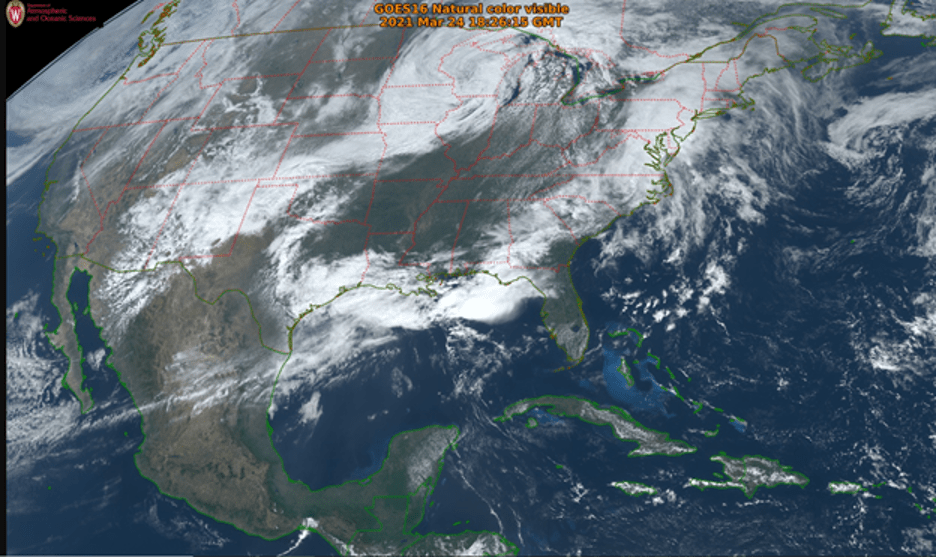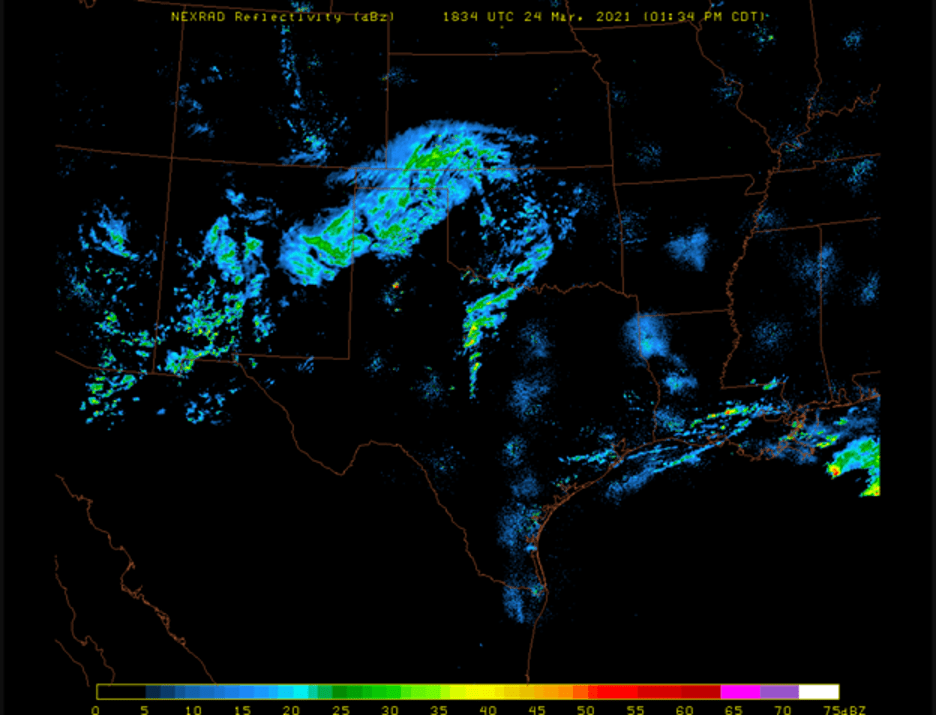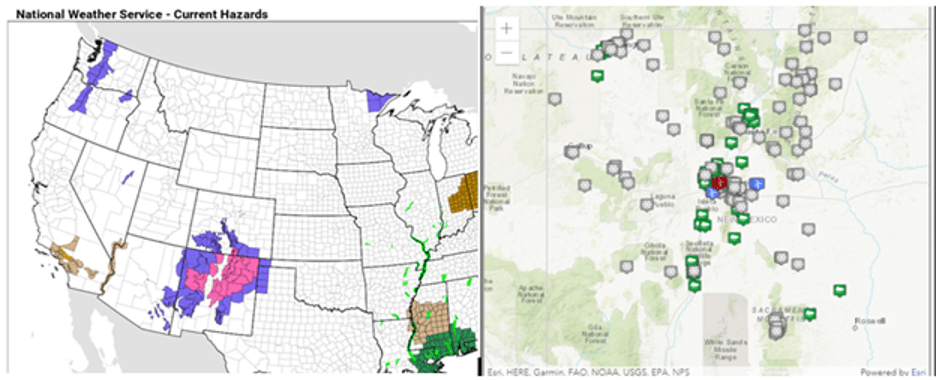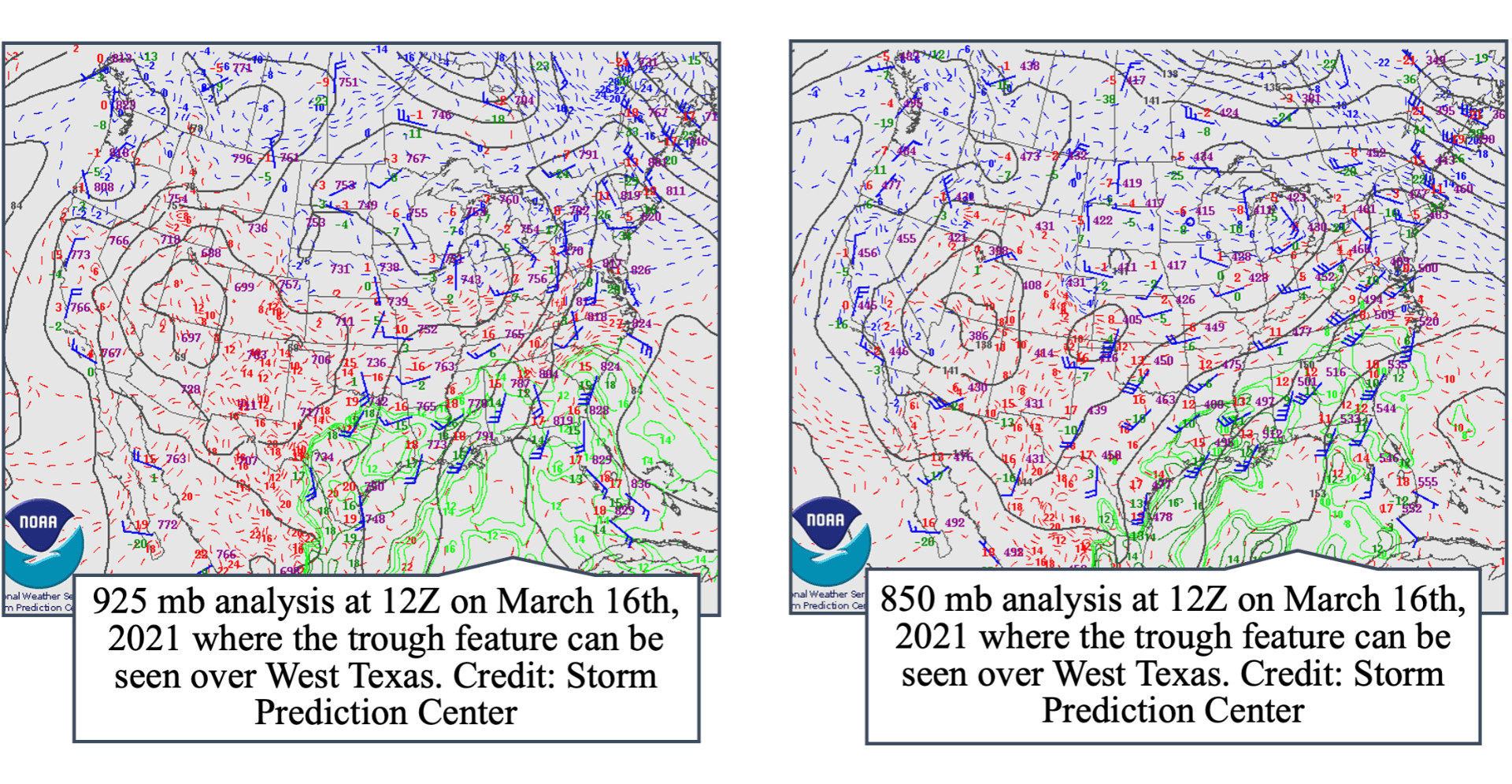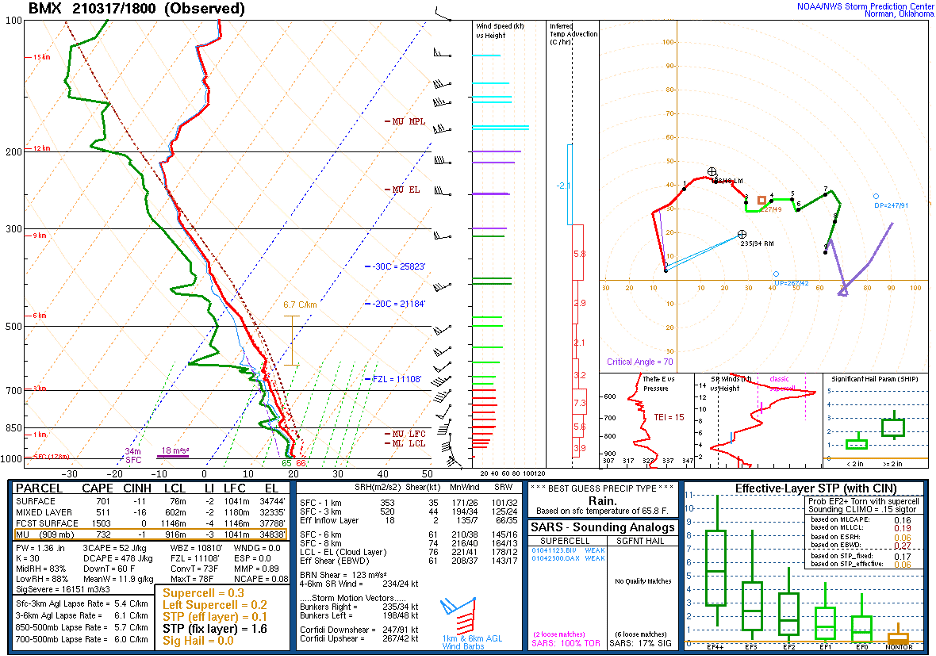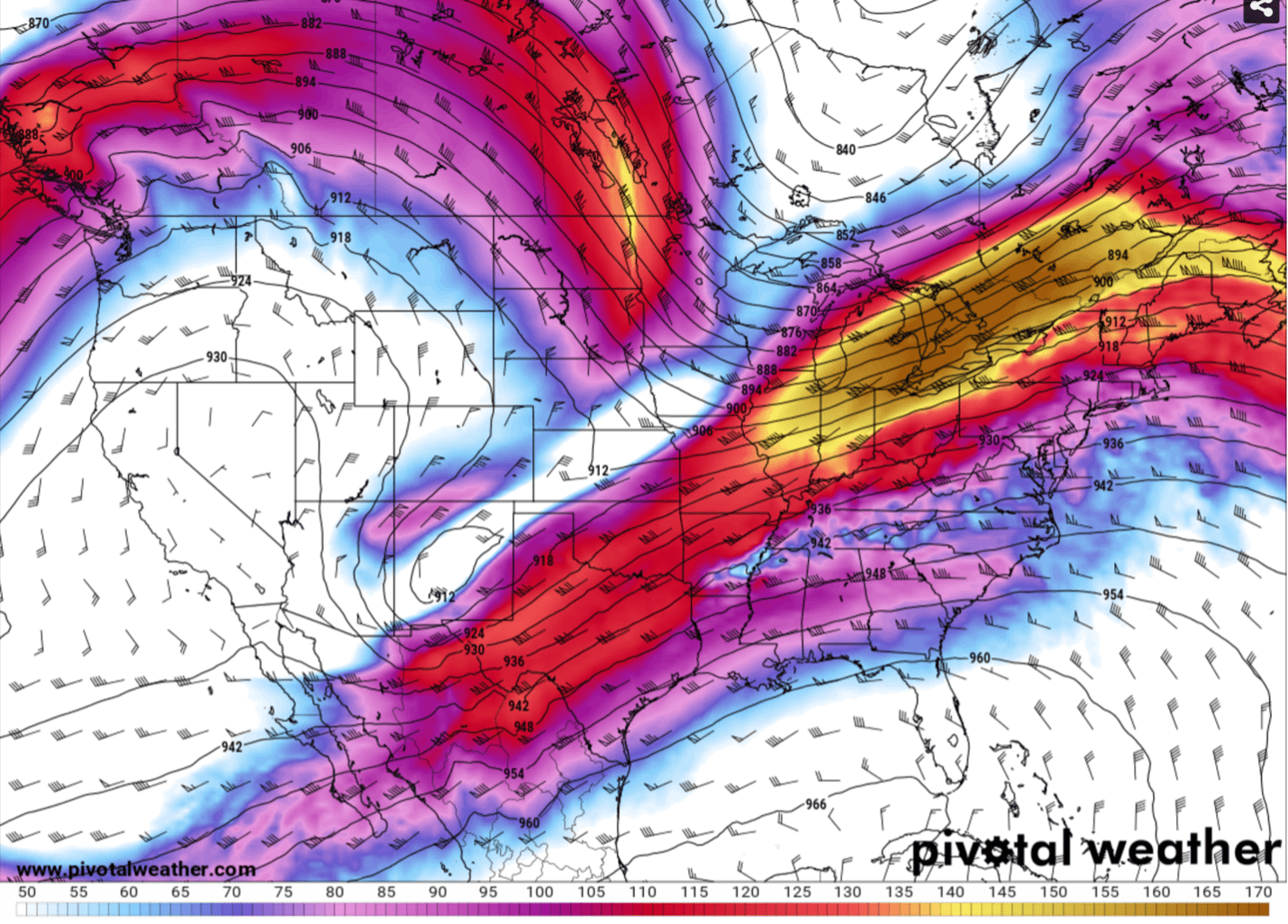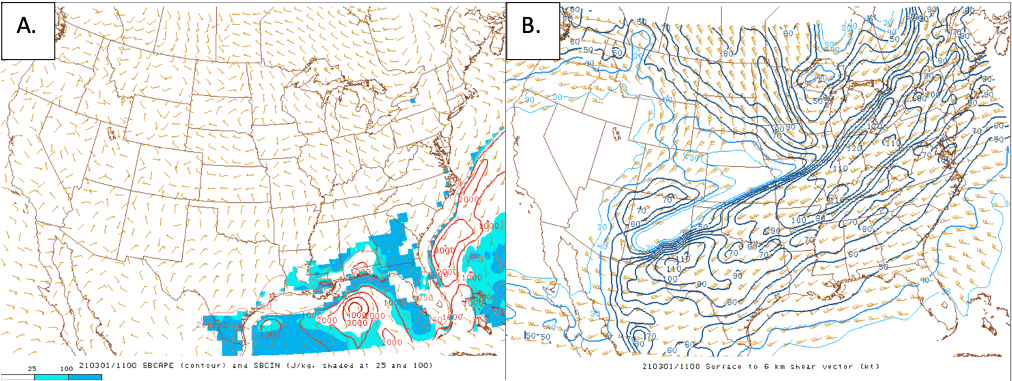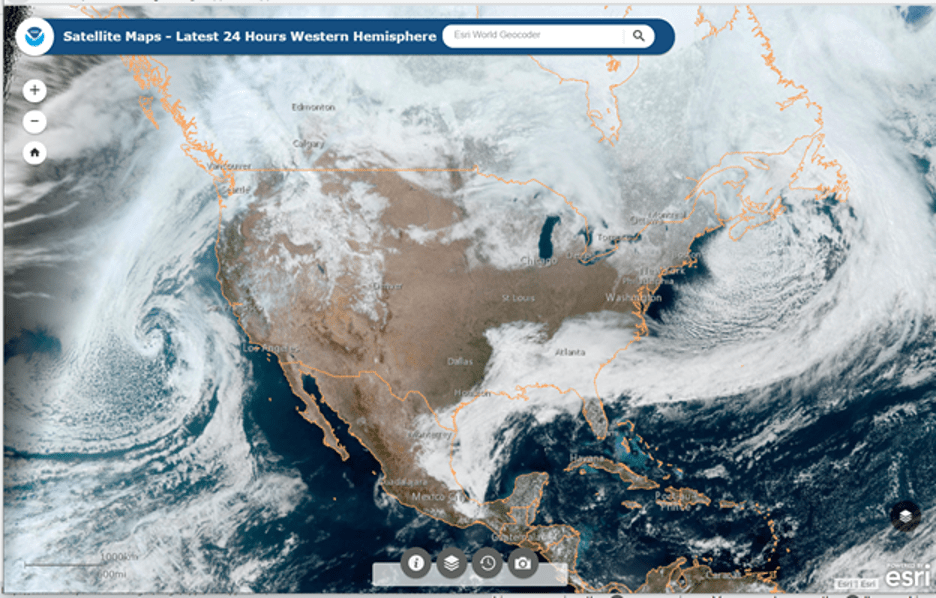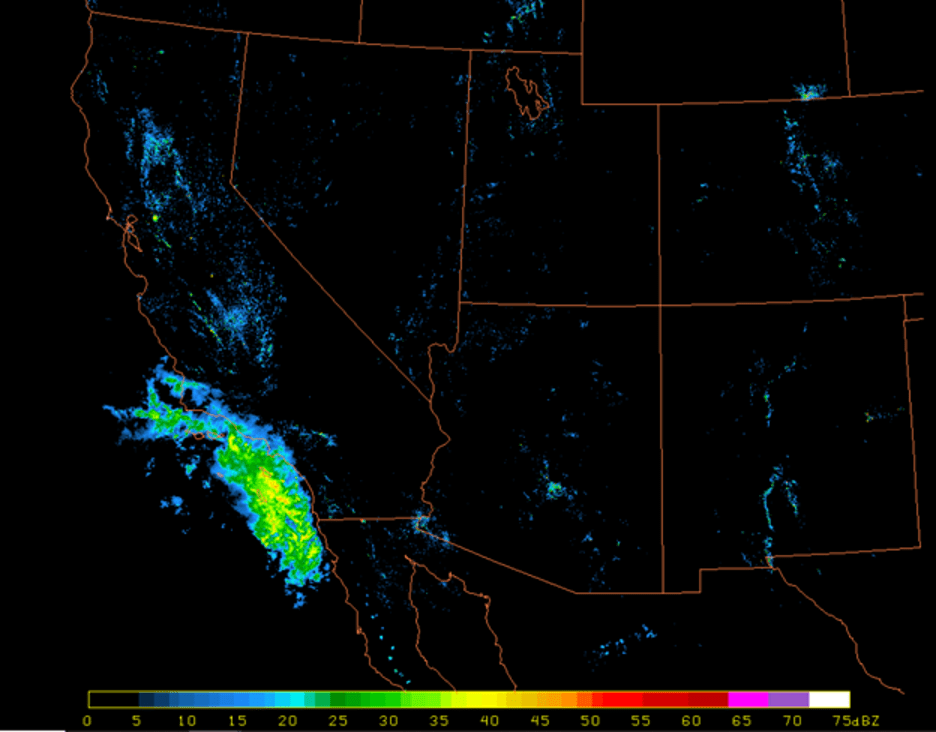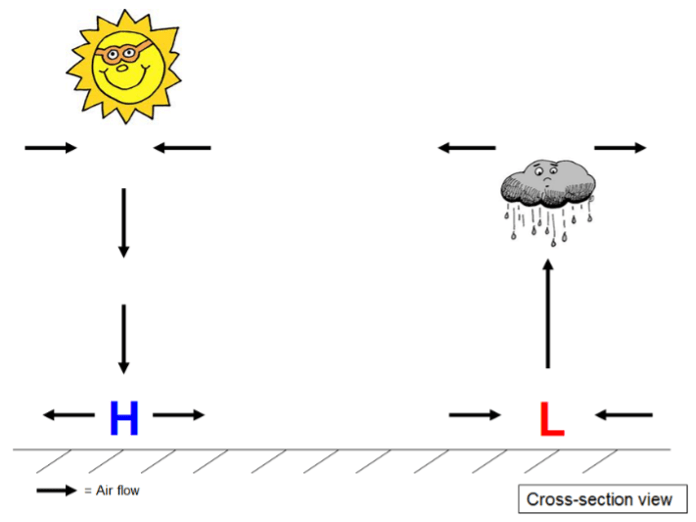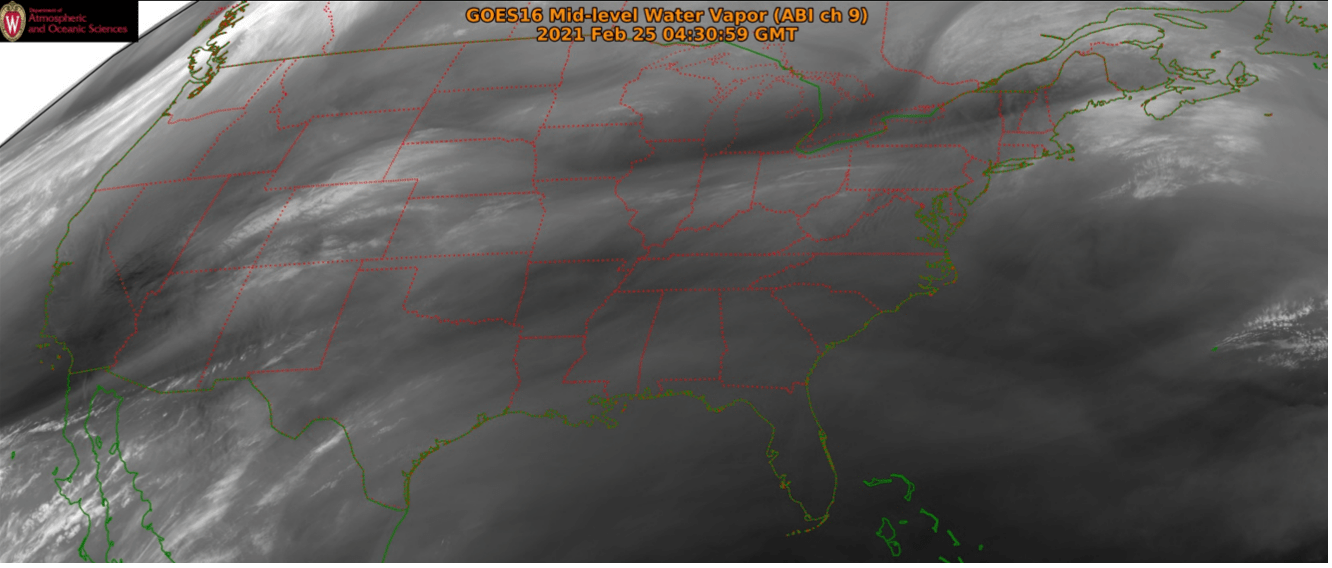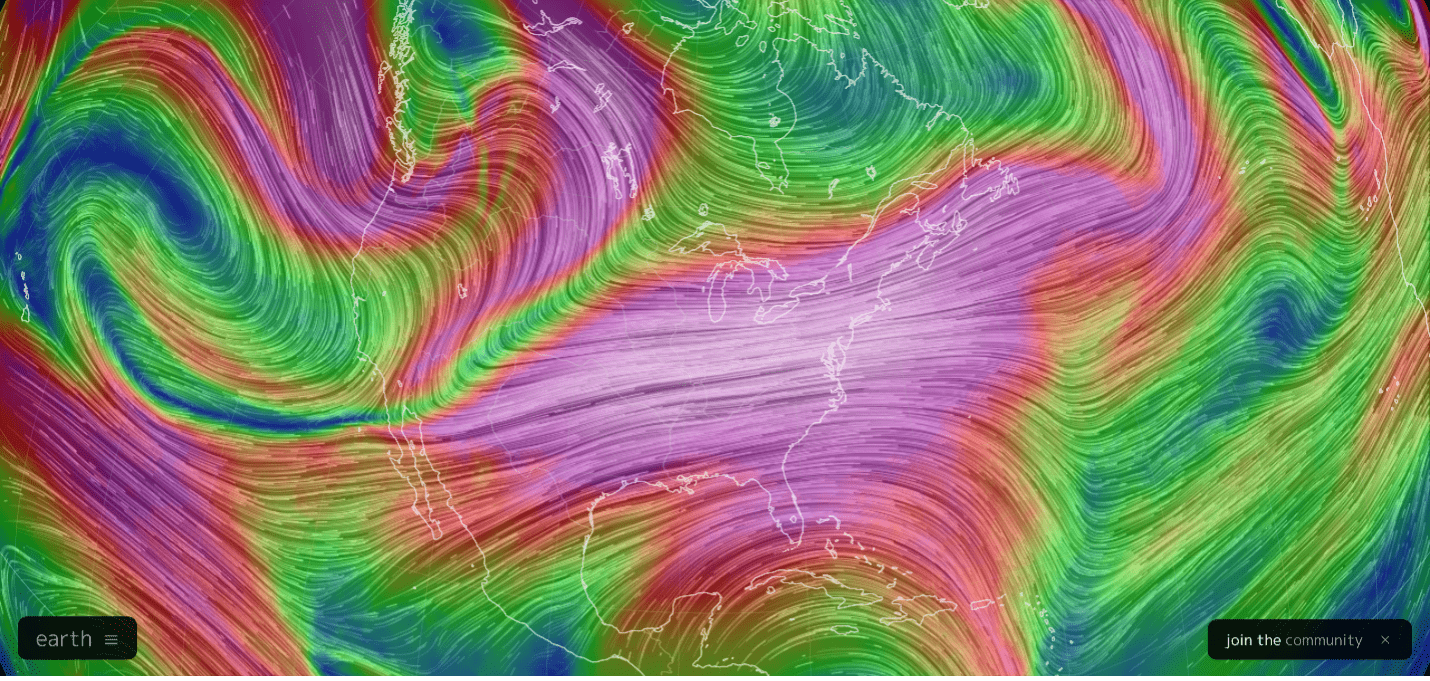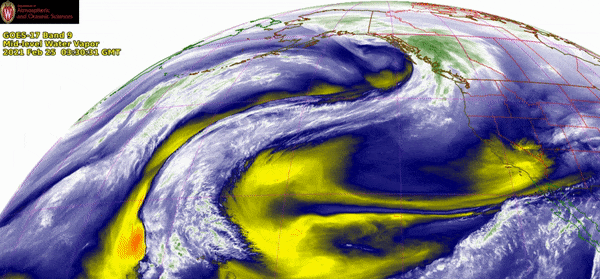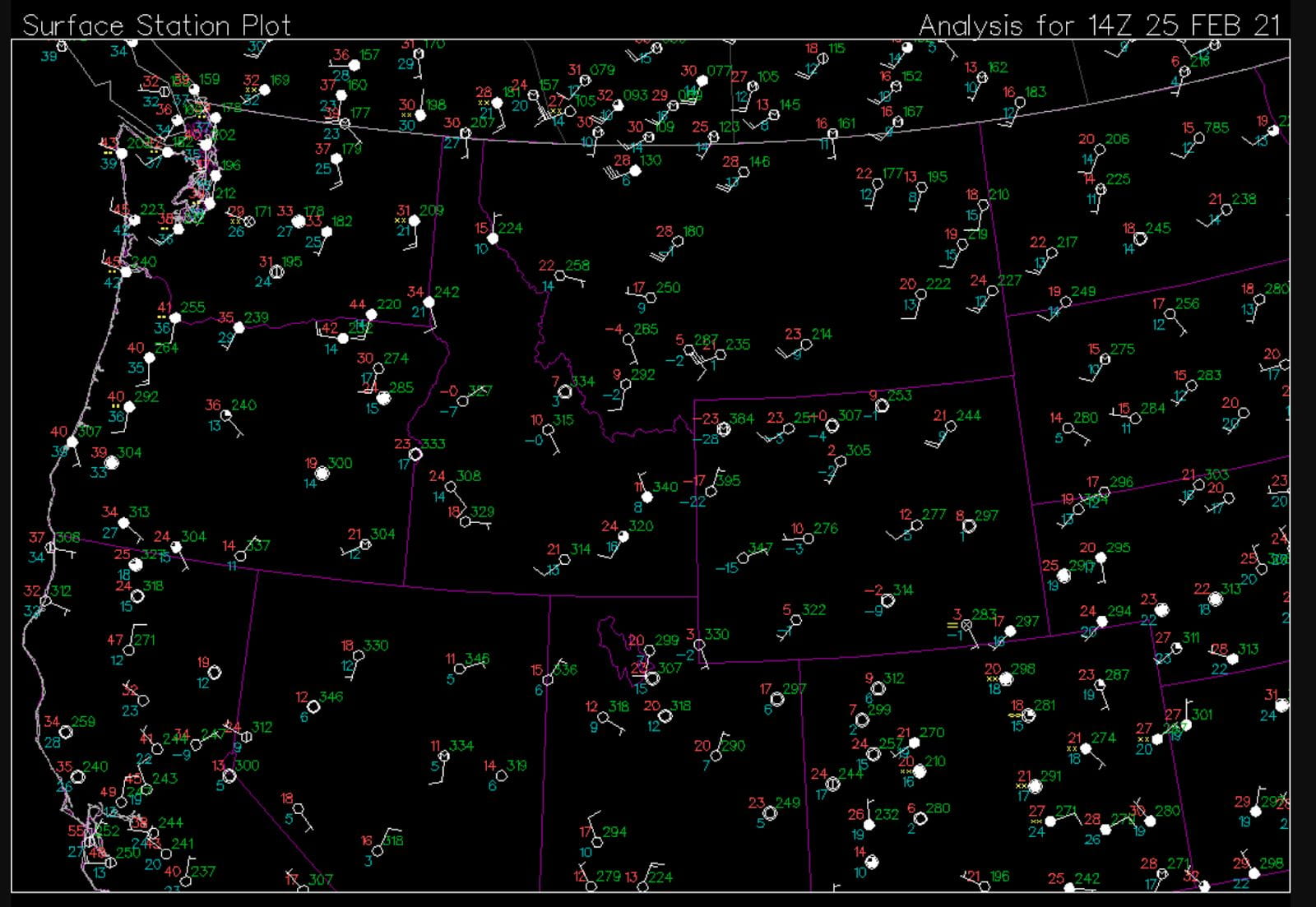A potent severe weather outbreak with all hazards (including strong tornados) was on tap for the South during the day and night of Thursday, March 25th. IR imagery from the morning showed thunderstorms already underway across portions of MS/AL based on very bright white spots over the area indicating cold cloud tops with discrete cells among the convection. The environment was primed for severe convection starting the night before on the 24th across parts of AK-LA-TX. Figure 1 depicts a supercell thunderstorm that formed near Junction, TX that at the very least developed some rotation based on velocity imagery (bottom panel) that showed a red-green
 Figure 1: Radar Reflectivity (top) and Velocity (bottom) from KSJT (San Angelo, TX)
Figure 1: Radar Reflectivity (top) and Velocity (bottom) from KSJT (San Angelo, TX)
couplet just west of the Junction area. Red colors indicate winds moving away from the radar while green colors indicate winds moving towards the radar, and when these two colors show up adjacent to each other and oriented in a tight couplet this indicates rotation. A corresponding hook echo is observed on radar reflectivity (top panel) just southwest of Junction where the possible tornado may have formed. A possible hail core associated with the supercell is indicated by the pink colors (this indicates very high dBZ values associated with large hydrometers such as hail).
The environment producing strong thunderstorms that night and through the day on Thursday the 25th was highlighted by a very warm, moist and unstable airmass over the deep South. In order to see this more clearly, I have included a screenshot of RGB Airmass imagery (Figure 2). This type of imagery is meant to identify all the different kinds of airmasses across a region. Specifically deeper green colors indicate a warm, moist airmass which one can see is draped across the South. A lot of this warm moist
 Figure 2: Airmass RGB Imagery from ~21z Thursday, March 25th
Figure 2: Airmass RGB Imagery from ~21z Thursday, March 25th
air is being supplied by a subtropical jet feature that set up over the Gulf of Mexico, bringing a constant stream of moisture into the region, resulting in high 60’s to low 70’s dewpoints across the area (Figure 3). Based on figure 3, a cold front was along the Mississippi River around 21z and looking at RGB Airmass imagery, you can see where some orange colors are found amongst the green around that same area. Orange colors indicate drier air and while not the best indicator of where the cold front is, it does
 Figure 3: 21z Surface Analysis from WPC
Figure 3: 21z Surface Analysis from WPC
hint a little at where the transition from a moist airmass to a dry airmass could be taking place. As you look to the west of the cold front you can see where dewpoints are starting to lower significantly which also hints at the drier airmass in the wake of the front. Not only do these orange colors on Airmass RGB indicate drier air, but also where a possible jet stream might be as well as any vorticity anomalies that can play a significant role in the overall dynamics of severe convection.
One way to figure out where the jet stream or upper-level trough feature is on RGB imagery is to look for deeper orange colors. Figure 2 not only shows this across the Eastern Plains and into the Midwest, but the shape and curl from the observed orange colors outlines the shape of the upper-level trough feature that was present that day. This trough was responsible for a lot of the upper-level divergence occurring which led to strong upward vertical motions and lift in the lower troposphere which helped to build and maintain the severe convection that day. Another feature to point out with those oranges colors is the present of strong vorticity anomalies. Vorticity anomalies are associated with dry, stratospheric air penetrating the troposphere which is what the orange colors on Airmass RGB imagery represent. Figure 4 is from the Alisha Bentley map analysis site showing relative vorticity values at 500mb as well as geopotential
 Figure 4: 00z Friday, March 26th 500mb Relative Vorticity (Alisha Bentley),
Figure 4: 00z Friday, March 26th 500mb Relative Vorticity (Alisha Bentley),
heights (black contours), rel. vorticity (fill pattern), ascent (blue)
height values at that level. Around the same area as the orange colors in figure 2 is where the trough feature is further outlined by the geopotential height contours. Within this region there are high values of vorticity and because the geostrophic wind can advect higher values of vorticity into a region, if you follow the height contours you can see where this vorticity is moving towards. Values of higher vorticity advecting into regions of lower vorticity is known as positive vorticity advection (PVA). PVA is generally associated with enhanced upward vertical motions and wind shear. Based on figure 4 there are high values of vorticity moving into the Midwest and South and therefore strong upward vertical motions can be expected in these areas as indicated by all of the blue showing up in these regions. This was one of the key ingredients fueling the severe weather outbreak that occurred that day across a large section of the country. This combined with the very warm, moist and unstable airmass led to an eruption of severe weather in the Midwest and especially across the South.


